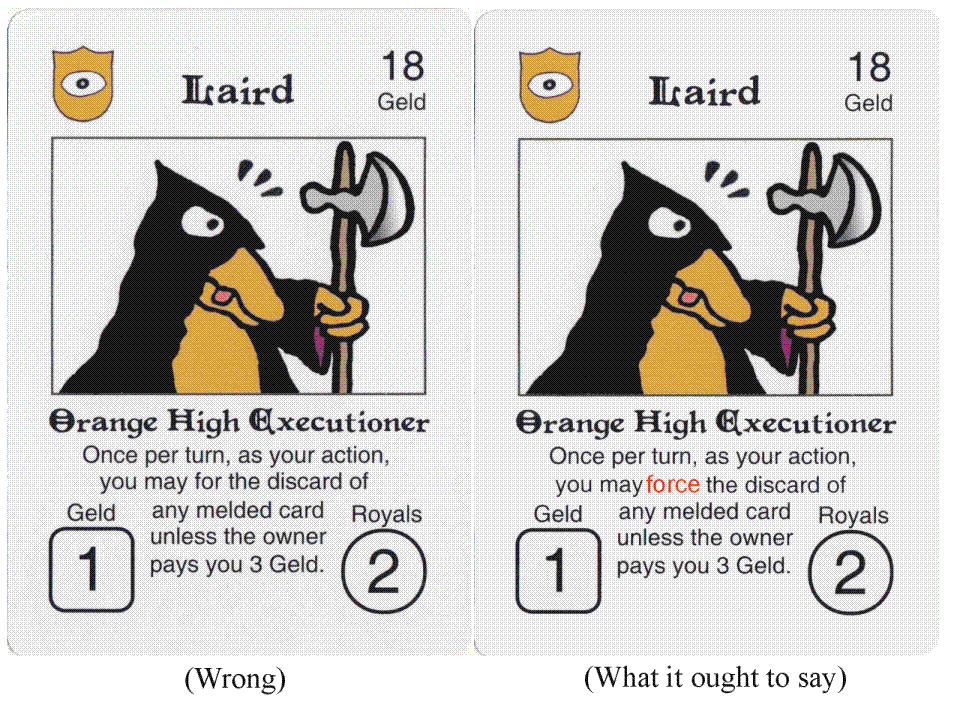Dragon Lairds

Copyright 2008 by James M. Ward and Tom Wham
|
Dragon Lairds began in 2003 with an idea Jim brought to our regular Culvers game day. Soon I was full of suggestions and changes, and eventually I was brought in to the project and began doing the illustrations for the cards... a process which took almost a year. Jim finally sold it to Troll Lord Games. Unfortunately, they sat on it for two years, with other projects taking precedence. We got it back and then sold it to Margaret Weis Productions, where, various role playing products kept pushing back the publication date for a couple years. Well at last it came out at the end of April 2008 in boxed form. |

Now sadly, Jim has discovered a part missing from the rules:IMPORTANT CORRECTIONA paragraph was left out of the How to Win section of the rules. The following is the entire section with the missing text highlighted in red:FINALE & WINNING THE GAMEWhen the game comes to an end, after the last turn is completely scored, do the following things (begin with the player with the lowest total on the Royals Track):1. Count Royals: Add up the Royal Points for each player's melded Lairds (and Power Broker Havocs), moving his pawn the correct number of spaces up the Royal Track. 2. Count Finale Royals: Now add up the Finale Royal Points for each player's other melded cards, moving his pawn the correct number of spaces up the Royal Track. These totals come from the Commoner and Resource cards. 3. Score Sets of cards: A complete set of cards is one of each of the possible colors in the game: i.e. 5 different colored Commoners or 5 different colored Havocs. Each of these complete sets is worth a total of ten points. Partial sets of anything are worth two points per card up to a total of ten points. A partial set only counts if there are at least two cards in the set. You may have as many complete sets of Commoner, Laird, Havoc, and Resource cards as possible. But only one partial set per card type may be scored. 4. For every card remaining in a player's hand of cards that isn't of the same color as the player's clan, subtract the stated cost of that card from the Royal Track. For every card left in a player's hand of cards that is the same color as the player's clan, subtract five points from the Royal Track no matter what the cost of the card was. 5. The Cup: If you are playing with the Optional Rule (the Saurean Cup), the Cup is bid for one final time. The player who bids the most geld certificates gains the Cup. Award the usual 1 Royal for winning the challenge and add one geld to the value of the cup. Now move that player's Royal total up a number of points equal to the number of Geld in (stacked under) the Cup. The player with the most Royal Points is the winner. If there is a tie... there is a tie! Smaller boo booUnder the section GELD RULES, the statement: How to stack your Geld! refers to the illustration at the top of page 7 in the rules. |
Error I recently discovered
In the deck of ORANGE LAIRDS, the Orange High Executioner has an error in it's ability text:The card should read as in the illustration below:

Go back to Tom Wham's Games & Books
Go back to Tom Wham's home page
This page updated July 2, 2019